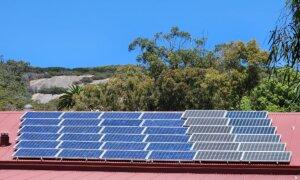Six new big battery projects—two in Victoria and four in South Australia—have made it to the winning list of the federal government’s initial round of the Capacity Investment Scheme (CIS), a key policy aimed at driving the nation towards its 2030 renewable energy target.
The successful projects have committed a total investment of $12.5 million (US$8.4 million) in shared benefits to local project communities and $6.5 million in initiatives for local Indigenous groups, alongside extensive use of local supply chains. These benefits are expected to reach residents by 2027.
Together, they will deliver more than 1,000 megawatts (MW) of capacity—significantly exceeding the 600 MW sought in the pilot tender. It includes one of the biggest batteries to be built in Australia, located in the heart of the Latrobe Valley.
“The batteries selected for federal funding support can run for up to four hours, delivering a reliable flow of clean energy whenever needed, including by storing cheap, plentiful rooftop and large-scale solar power generated during daylight hours,” said the government statement on Sept. 4.
Announcing the winning bids in Victoria and South Australia in the first pilot round of the CIS, Energy Minister Chris Bowen said, “The Albanese Government is making sure that when Victorians and South Australians hit the light switch, they have access to the cheapest, most reliable renewable power when and where they want it.”
With an eye on the upcoming election, Bowen also added that Victorians and South Australians shouldn’t have to wait two decades for “Peter Dutton’s anti-renewables nuclear energy fantasy.”
Emphasising the importance of renewable energy and storage capacity in meeting Victoria’s ambitious targets, Victorian Minister for Energy and Resources Lily D’Ambrosio said the initiative is critical to achieving the state’s goal of 95 percent renewables by 2035.
“This will also help meet energy storage targets of at least 2.6 gigawatts by 2030 and 6.3 gigawatts by 2035,” she added.
South Australian Minister for Energy and Mining Tom Koutsantonis highlighted his state’s progress in renewable energy.
“Our state already boasts more than 75 percent of its energy coming from renewable sources, and we’ve brought forward our target to boost that to a net 100 percent by 2027,” he stated.
The six selected projects include the Wooreen 350 MW energy storage system, the Springvale Energy Hub 115 MW battery energy storage system, the Limestone Coast West 250 MW lithium-ion battery storage, the Solar River battery storage system (part of a hybrid project of 256 MW), the Clements Gap 60 MW battery energy storage system, and the Hallett 50 MW battery energy storage system.







